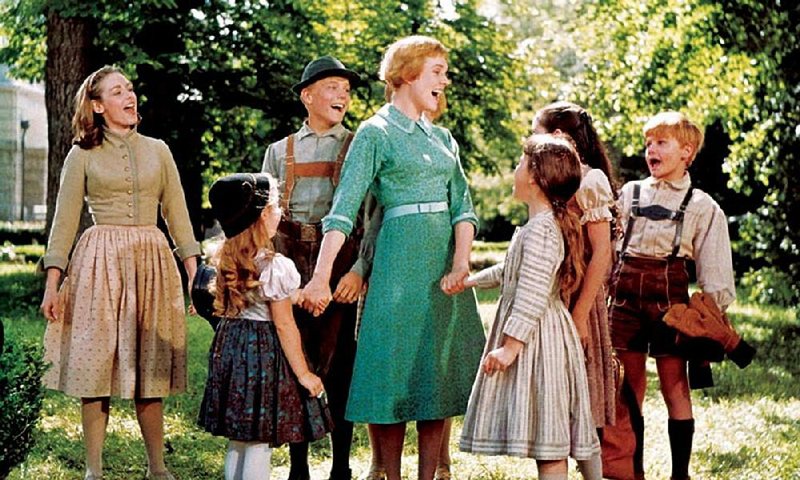Late in The Sound of Music production -- after a helicopter's downdraft had knocked Julie Andrews over, after rain clobbered the schedule and budget, and after an angry farmer poked holes in a man-made brook -- the leading lady delivered a tentative prediction.
"This smells as if it might be a success," Andrews said.
The 1965 musical was so phenomenally popular that it was nicknamed "The Sound of Money" and dubbed "The Mint." The movie played in American theaters for 4½ years, until the studio withdrew it with plans for a re-issue. The demand in England was so insatiable that the film set a record with 170 weeks at a London theater.
Decades later, while promoting a live CBS presentation of On Golden Pond with co-star Christopher Plummer, Andrews said, "I don't think either of us knew it would take off that way. ... I guess when you put all those ingredients -- beautiful scenery and beautiful music and children and nuns and all of that -- together, the only thing that was missing was Lassie, I guess."
Who needs Lassie when you have nearly 2.5 million Facebook followers and a looming golden anniversary that will revisit the glories of the musical?
For starters, Lady Gaga performed a medley from The Sound of Music at last month's Oscar ceremony and was greeted by Andrews afterward.
20th Century Fox Home Entertainment last week released a five-disc edition with a new documentary, The Sound of a City: Julie Andrews Returns to Salzburg. And the restored film will return to 500-plus theaters April 19 and 22.
The movie also will celebrate its golden anniversary by opening the TCM Classic Film Festival on March 26 at the TCL Chinese Theatre in Hollywood, where Andrews and Plummer are expected for a rare reunion.
It premiered March 2, 1965, at the Rivoli Theatre on Broadway in front of an audience that included Richard Rodgers, Bette Davis, Salvador Dali and Adlai Stevenson, Richard Stirling's biography of Andrews reported. Davis told the leading lady, "The motion picture business is in love with you!"
It began as a "roadshow" engagement, with reserved seating at a very limited number of theaters, higher prices ($1.50 to $3 depending on the day, time and whether you were in the nosebleeds) and scheduled film start times instead of continuous shows. It also had an intermission, just like a Broadway play.
That is the opposite of the release pattern today, where a movie often will open on as many screens as possible and aim to be the box-office champ for the weekend or longer. A popular film might hold for a few months before starting its speedy march to DVD, Blu-ray and on-demand viewing.
The Sound of Music was an event, and even by Dec. 18, 1965, it was playing in 131 of the 14,000-plus theaters in the United States. The movie musical broke records in 80 percent of those U.S. locations and a Fox vice president famously pointed to Salt Lake City as an example of its success. The city's population then was 199,300 and yet a theater there sold 309,000 tickets.
For a time, Sound of Music displaced Gone With the Wind as the domestic box-office champion of all time, although it now stands at No. 3 when adjusted for inflation, behind GWTW and Star Wars: Episode IV -- A New Hope.
Style on 03/17/2015

